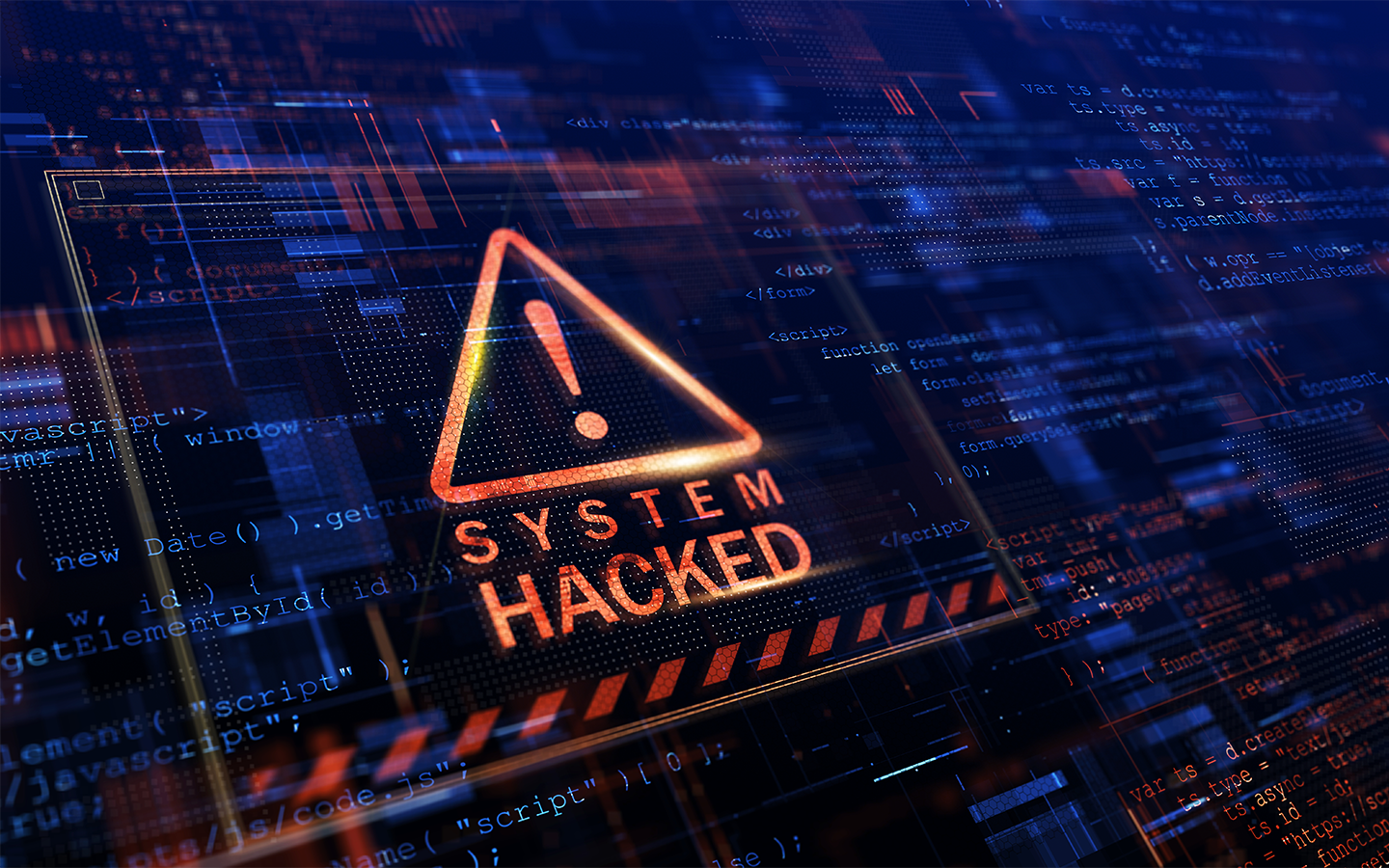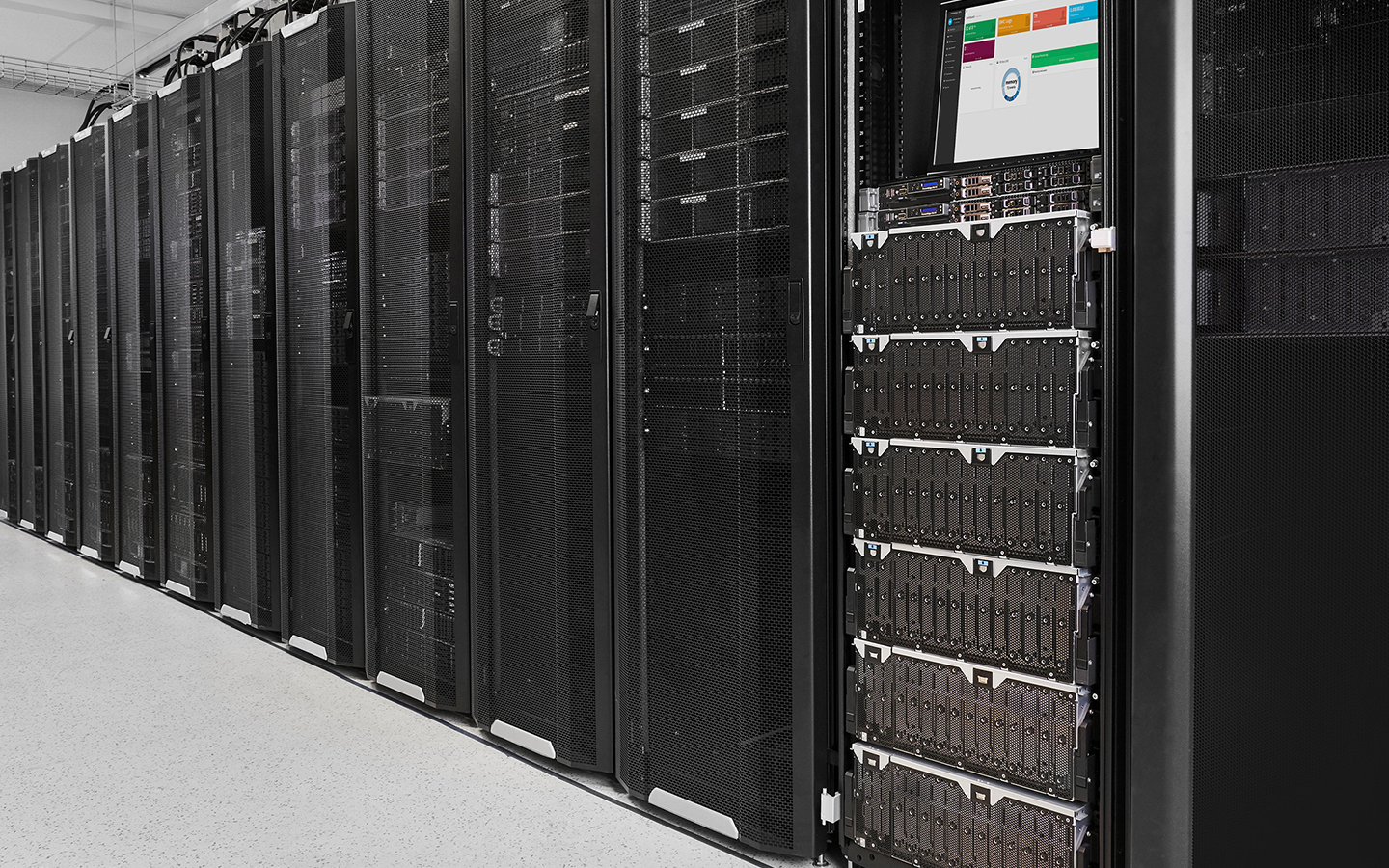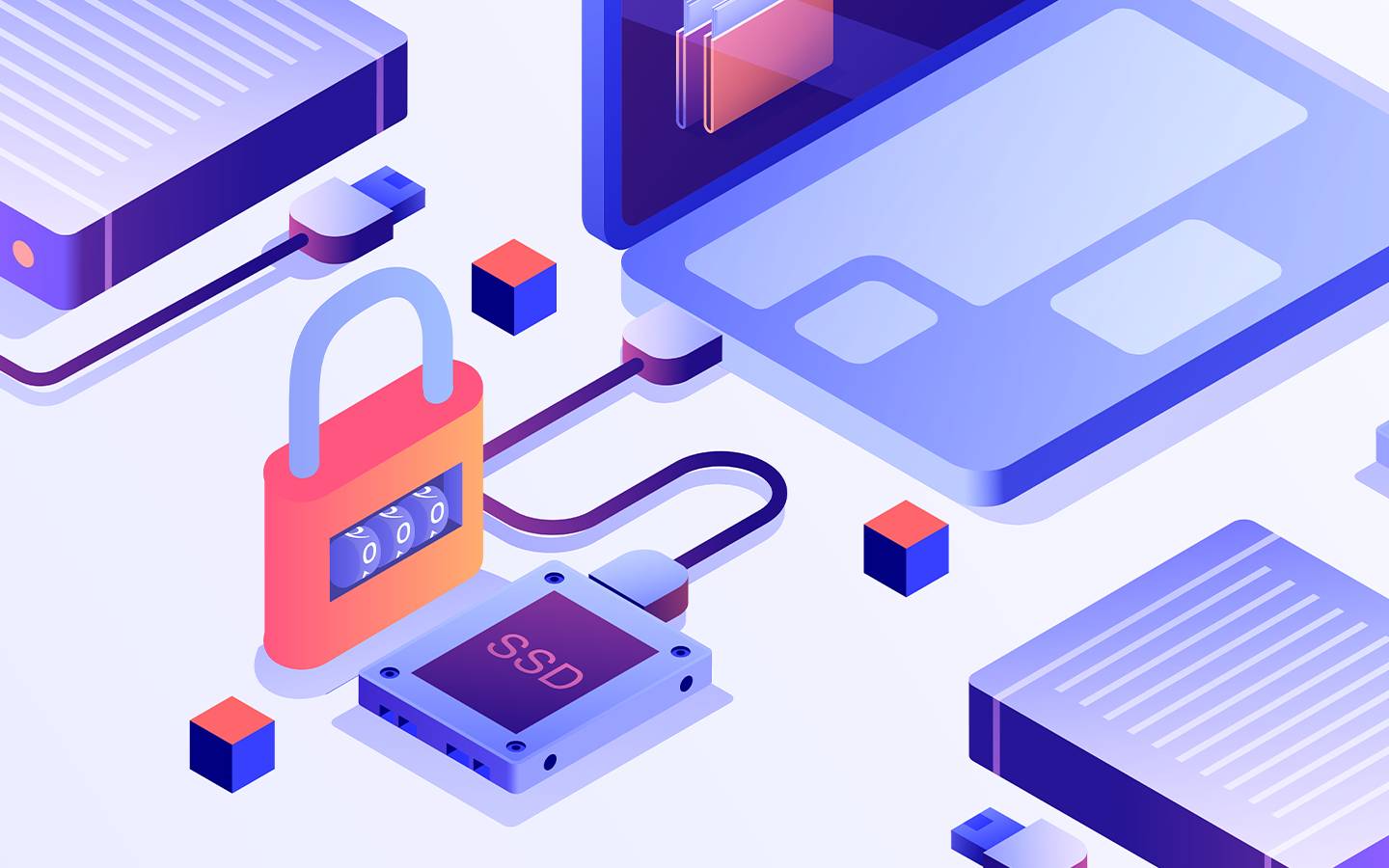Self-encrypting drives (SEDs) are a critical component of safeguarding sensitive information in the current digital age, where data security is paramount. These advanced storage solutions integrate encryption directly into the hardware, ensuring data remains encrypted throughout its lifecycle—from storage to retrieval. This proactive approach reduces the risk of unauthorized access, data breaches, and compliance violations, offering peace of mind to organizations handling confidential data.
What Are Self-Encrypting Drives (SEDs)?
Self-encrypting drives are designed to automatically encrypt data without relying on software, making them highly efficient and secure. Unlike traditional drives that may require additional encryption software, SEDs encrypt data at the hardware level, seamlessly integrating encryption processes into everyday operations. This simplifies data protection and enhances performance by offloading encryption tasks from the system’s CPU to the drive itself.
As businesses and individuals prioritize data privacy and security, understanding the fundamentals of SEDs becomes essential. This article delves into the core concepts of self-encrypting drives, exploring their functionality, benefits, and implementation considerations. Whether new to data security technologies or seeking to boost your organization’s defenses, gaining insights into SEDs will help you make informed decisions regarding your data storage solutions.
Why Should You Use Self-Encrypting Drives?

The proliferation of cyber threats and sophisticated hacking techniques has heightened the need for powerful data protection solutions. Self-encrypting drives offer a proactive solution to mitigate these risks by integrating encryption directly into the hardware. This approach means data remains encrypted, safeguarding it from unauthorized access and potential breaches.
Increasing Threats of Cyber Attacks
Cyberattacks continue to evolve in scale and sophistication, posing significant risks to businesses and individuals. With a range of tactics—from ransomware to phishing attacks—malicious actors constantly seek to exploit vulnerabilities in data storage devices and transmission. SEDs defend against these threats by encrypting data as it’s written to the drive and decrypting it only when accessed by authorized users or applications. This hardware-based encryption offers a robust barrier against data breaches. So, even if a drive is physically compromised, the encrypted data remains unreadable without the proper authentication.
Trends in Data Protection
Data protection is constantly evolving to keep pace with emerging threats and regulatory requirements. Organizations across industries are adopting encryption technologies like SEDs to comply with stringent data privacy laws such as General Data Protection Regulation (GDPR), Federal Information Processing Standards (FIPS), and California Consumer Privacy Act (CCPA). Moreover, trends indicate a growing emphasis on encryption by default, where sensitive data is automatically encrypted at rest and in transit. This proactive approach enhances security and instills confidence among stakeholders, demonstrating a commitment to protecting sensitive information from unauthorized access and breaches.
Types of SEDs
There are various SED types, each offering distinct features and functionalities tailored to different use cases and security requirements. The primary distinction lies in how encryption is implemented and managed within the drive.
How Do Self-Encrypting Drives Work?
SEDs integrate encryption directly into the hardware, ensuring all data written to the drive is automatically encrypted using strong cryptographic algorithms. This process occurs transparently to the user or system, requiring no additional software or configuration to enable encryption. When data is read from the drive, it is decrypted on the fly, provided the proper authentication credentials are presented. This seamless encryption and decryption process keeps the data protected at rest and in transit, offering robust security against unauthorized access.
Hardware-Based and Software Self-Encrypting Drives
There are two main categories of self-encrypting drives: hardware-based and software-based.
Hardware-based SEDs integrate encryption directly into the disk controller of the drive, ensuring encryption and decryption processes are performed at hardware speed without impacting system performance. In contrast, software-based SEDs rely on encryption software installed on the host system to manage encryption tasks.
While both types offer encryption capabilities, hardware-based SEDs are generally preferred because of their higher security and efficiency.
For example, the Seagate Exos® X Series of enterprise hard drives offers Seagate Secure™ hardware-based encryption technology with options for SEDs, SED-FIPS (using FIPS-approved algorithms for encryption), and instant secure erase (ISE). Learn more about protecting your data with Seagate SEDs.
How to Lock/Unlock Self-Encrypting Drives?
Locking and unlocking a self-encrypting drive typically involves setting up and managing authentication credentials such as passwords or PINs. This process ensures that only authorized users or systems can access the encrypted data stored on the hard drive. Most SEDs provide a user-friendly interface or utility that allows users to initialize, change, or reset their authentication credentials securely. By implementing strong authentication mechanisms, SEDs enhance data security by preventing unauthorized access to sensitive information, even if the physical drive is compromised or stolen.
Seagate Advantage: Secure Data Storage Solutions

Seagate is at the forefront of providing secure data storage solutions, offering an industry-leading lineup of self-encrypting drives designed to meet stringent security requirements across various industries. The below outlines ways in which Seagate SEDs feature a significant advantage.
Integration with Existing IT
Seagate self-encrypting drives are engineered for seamless integration with existing IT infrastructures. Whether deployed in enterprise environments or small businesses, these drives can easily fit into diverse IT ecosystems without requiring major overhauls. With this integration capability, minimal disruption to operations and enhanced data security through hardware-based encryption is the norm.
Hardware-Based Encryption
Seagate SEDs leverage hardware-based encryption to safeguard data stored on the drive. By integrating encryption directly into the disk controller or the drive itself, these solutions provide strong protection against unauthorized access and data breaches. Hardware-based encryption ensures that encryption and decryption processes are performed efficiently without compromising system performance.
Compliant with Industry Regulations
Seagate SEDs adhere to stringent industry regulations and standards for data security and privacy, such as Trusted Computing Group (TCG) Opal 2.0. Whether mandated by GDPR, the Health Insurance Portability and Accountability Act (HIPAA), or other regulatory frameworks, these drives offer compliance assurance by encrypting sensitive data at rest. This compliance ensures organizations can securely manage and protect sensitive information, mitigating risks associated with regulatory non-compliance.
Ease of Management and Administration
Seagate simplifies the management and administration of self-encrypting drives through intuitive tools and utilities. These tools allow IT administrators to centrally manage encryption keys, set access policies, and monitor drive health effortlessly. With user-friendly interfaces and powerful management features, Seagate SEDs streamline data security operations, reducing the administrative burden and enhancing efficiency.
Are SEDs Secure?
Yes, SEDs are considered secure due to their hardware-based encryption because the drive’s dedicated hardware automatically encrypts and decrypts all data written to and read from the drive.
A primary benefit is that the encryption and decryption process is transparent to the user and does not impact system performance.
Additionally, SEDs typically feature authentication mechanisms such as passwords or security keys, which are required to unlock and access the data, further enhancing their security.
The encryption keys used in SEDs are generated and stored within the drive, making them inaccessible to external software attacks. This design minimizes the risk of key theft or compromise.
Moreover, many SEDs comply with industry standards like the Opal Storage Specification, ensuring interoperability with various security management tools and providing advanced features like secure erase, and compliance with data protection regulations. Overall, SEDs offer a robust and efficient way to protect sensitive data at rest.
What Level of Encryption Do SEDs Provide?
SEDs typically use advanced encryption standards (AES) with key lengths of 128-bit or 256-bit. AES encryption is widely recognized for its strength and reliability in protecting data against unauthorized access. This level of encryption ensures data stored on SEDs remains secure and inaccessible without the appropriate encryption key, providing peace of mind to organizations handling sensitive information.
For example, Seagate Exos X enterprise drives utilize AES-256 encryption, which is a strong level of encryption widely recognized for its security and efficiency. AES-256 is considered highly secure and commonly used for sensitive data protection by governments, financial institutions, and enterprises.
What Are the Different Levels of Available Encryption?
SEDs may offer different levels of encryption based on the specific model and configuration. Some SEDs support multiple encryption modes, such as S3 encryption, allowing organizations to choose the appropriate level of security based on their data protection requirements. Standard encryption methods encompass full disk encryption (FDE) and hardware-based encryption. FDE encrypts all data stored on the drive and hardware-based encryption and decryption processes are handled by the drive’s hardware components.
Backup Self-Encrypting Drives
Backing up data stored on SEDs is crucial for ensuring data resilience and continuity in case of drive failure or data loss events. Backup strategies for SEDs involve creating encrypted backups of the data stored on the drive using secure backup solutions. These encrypted backups preserve the confidentiality and integrity of the data while enabling organizations to recover data efficiently in the event of a disaster or hardware device failure. Implementing regular backups of self-encrypting drives helps organizations maintain data security and availability, minimizing the impact of potential data breaches or operational disruptions.
Unlocking the Power of SEDs
Unlocking the full potential of SEDs involves understanding and utilizing their key features and capabilities effectively, including:
- Encryption Management Tools: Use tools provided by the drive manufacturer, like Seagate Secure™ Toolkit, to manage and configure encryption settings. These tools typically allow you to set up and manage authentication credentials, such as passwords
- Integration with Security Software: Integrate the SED with compatible security management software that supports the Opal Storage Specification. This can provide additional features such as remote management, policy enforcement, and audit logging.
- Enable BIOS/UEFI Management: Configure your system’s BIOS or Unified Extensible Firmware Interface (UEFI) to manage the drive’s locking and unlocking mechanisms. This ensures the drive can only be accessed when the correct credentials are provided during the system boot process, adding an extra layer of security.
- Regular Updates and Monitoring: Keep the drive’s firmware updated to be sure you have the latest security enhancements and bug fixes. Regularly monitor and audit access logs if available, to detect any unauthorized attempts to access the drive.
By leveraging these strategies, your SEDs will provide robust data protection while maintaining ease of use and management.
Considerations for Implementing SEDs
Organizations considering the implementation of SEDs must evaluate several key factors to promote seamless integration and optimal performance within IT infrastructure.
Compatibility with Current IT
Before adopting SEDs, compatibility with existing IT systems is crucial. Compatibility considerations include support for operating systems, hardware configurations, and integration with existing storage solutions. SEDs typically offer broad compatibility across various platforms and minimal disruption during deployment.
Performance Impact and Scalability
One common concern when deploying SEDs is the potential performance impact due to encryption processes. Hardware-based encryption within SEDs minimizes performance degradation compared to software-based encryption solutions. Organizations should assess performance benchmarks and scalability options to confirm SEDs meet current and future data processing demands.
Total Cost of Ownership
Calculating the total cost of ownership (TCO) involves assessing upfront costs, ongoing maintenance expenses, and potential savings from enhanced data security and reduced operational overhead. While SEDs may have a higher initial acquisition cost compared to non-encrypting drives, the long-term benefits of improved security and compliance can outweigh these expenses.
Ease of Configuration and Maintenance
SEDs offer simplified configuration and maintenance features, facilitating ease of deployment and ongoing management. Centralized management consoles allow IT administrators to configure encryption settings, manage encryption keys, and monitor drive health efficiently. This simplified method minimizes administrative burdens and maintains uniform security policies throughout the organization’s storage infrastructure.
Seagate: Your Trusted Partner in Data Security
Seagate stands at the forefront of data security with its range of consumer and enterprise SEDs, designed to safeguard sensitive information across various applications.
Featured prominently in Seagate's product lineup are:
- Seagate Exos X Series: Built for enterprise environments, offering robust security features and high-performance hard drive storage solutions.
- Seagate Barracuda® Series: Ideal hard drives for desktop computing and personal storage needs, combining reliability with enhanced data protection.
- Seagate IronWolf® Series: Tailored for NAS (Network Attached Storage) systems, providing scalable storage solutions with integrated security measures.
- Seagate Nytro® Series: SSDs optimized for data center applications, delivering speed, efficiency, and advanced encryption capabilities.
Seagate’s commitment to data security extends beyond hardware specifications, encompassing comprehensive support and expertise in implementing secure storage solutions. By choosing Seagate SEDs, organizations gain peace of mind knowing their data is protected against unauthorized access and cyber threats.











